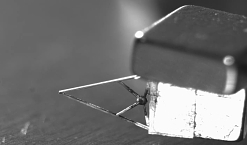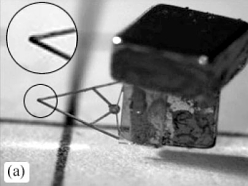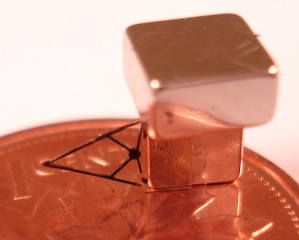
Researchers develop first flying micro-robot
By Design Engineering staff
General R&D Robotics UniversityA U of Waterloo engineering research team has developed the world's first flying micro-robot capable of manipulating objects for micro-scale applications.

A University of Waterloo engineering research team has developed the world’s first flying micro-robot capable of manipulating objects for micro-scale applications. The mini-’bot discovery provides researchers with more control over the micro-scale environment—with tiny objects at levels too small to be manipulated by humans—allowing them to move and place tiny objects with greater precision.

It has been demonstrated the system has a positioning accuracy of 13.2 µm in a volume of 3x3x2 cm3. Watch Video >
Professor Behrad Khamesee, director of the university’s Maglev (magnetically levitated) Microrobotics Laboratory, heads the team that built the prototype flying micro-electro-mechanical systems (MEMS) robot. It defies the force of gravity by flying, or levitating, powered by a magnetic field. It moves around and dexterously manipulates objects with magnets attached to micro-grippers, remotely controlled by a laser-focusing beam.
It can be used for micromanipulation, a technique that enables precise positioning of micro objects. Applications of such manipulations include micro-assembly of mechanical components, handling of biological samples and microsurgery.

“We have developed a magnetically levitated micro-robot, which is a new technology for manipulation using flying micro-robots,” said Khamesee, a professor of mechanical and mechatronics engineering skilled in developing micro-scale devices using magnetic levitation.
“We are the first in the world to make such a floating robot equipped with micro-grippers. It can enter virtually any space and can be operated in a sealed enclosure by a person outside, which makes it useful for handling biohazardous materials or working in vacuum chambers and clean rooms.” » Engineering details continued on next page
